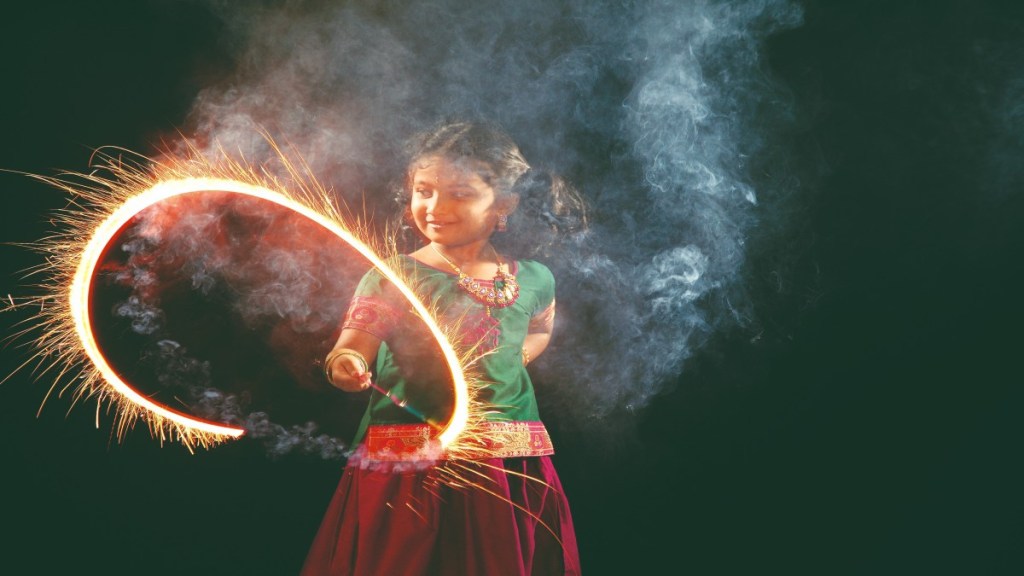The lights, fireworks and celebrations of Diwali while thrilling, can often turn risky if enough caution is not maintained.
Last year, the national capital alone recorded over 700 fire incidents during Diwali and the Delhi Fire Department its highest number of emergency calls in a decade.
Risk from crackers
Dr Sanjay Mehta, director, accident & emergency, and consultant, internal medicine, Kokilaben Dhirubhai Ambani Hospital, Mumbai, says, “Prevention is key during celebrations. Safety measures include wearing cotton clothing to reduce the risk of burns, lighting crackers only in open and ventilated areas, and ensuring children are supervised at all times.” Dr Mehta adds that immediate first aid plays a critical role, like cold water over minor burns within the first 10 minutes can minimise tissue injury. “Having a basic first-aid kit, burn ointments, and buckets of water or sand nearby is strongly recommended.” Although government regulations exist on green crackers as well as permissible sound limits, they are seldom observed in celebrations. Dr Mehta recalls a vast number of Diwali accidents which could serve as cautionary cases.
“Emergency and burns specialists frequently report cases of partial- to full-thickness burns, often on the face, hands, and chest. Eye trauma is another concerning outcome, ranging from corneal abrasions and chemical burns to eye ball rupture, which can lead to permanent blindness,” he said, adding that finger amputations, or complex hand injuries requiring surgical intervention can also happen.
Dr Prem Raj Singh, spokesperson for the trauma centre of King George’s Medical University, Lucknow, echoes Dr Mehta’s views, saying he has seen serious eye issues emerge from embers of fireworks having landed in people’s eyes. “People often get too close to the fireworks or even try to perform stunts with them. These activities happen in uncontrolled environments, making the risk of accidents much higher,” he explains. Dr Singh warns that “one ignored gas leak or a drop of fuel somewhere can be the start of a disaster even with a spark.”
Air pollution
Dr Singh says smoke inhalation is a significant risk, with some patients presenting acute wheezing, low oxygen saturation, or worsening of chronic respiratory disease. “Those with preexisting conditions like asthma are particularly vulnerable to smoke inhalation and increased levels of pollution during this time.”
Every year the Indian Institute of Toxicology Research releases a post-Diwali air quality report. Delhi typically charts the highest numbers when it comes to worsening air quality. Last year Delhi jumped from 352 to 392 in a matter of 24 hours, with Chandigarh a close second charting a highest AQI of 302 around Diwali. Air pollution in most major cities rises significantly during Diwali.
Smoke expelled from Diwali crackers can often lead to immediate respiratory issues, long-term complications and other cardiovascular risks.
Noise pollution
Dr Mehta says blast injuries from firecrackers sometimes result in ear drum (tympanic membrane) ruptures. The permissible sound level for fireworks in India is 125 decibels at 4 metres of bursting, as per the Central Pollution Control Board. However, most explosive fireworks, as well as rockets, do not abide by this regulation. Some states have designated time windows for when firecrackers can be burst on certain days, dispatching police forces onto the streets to ensure compliance. Dr Mehta adds that apart from the aforementioned, “Noise levels above 120 decibels contribute to temporary or permanent hearing loss, exacerbate hypertension, and increase stress levels…Road traffic accidents also see an uptick during festivities, linked to distracted or reckless driving and burning crackers on roads.”
Check overindulgence
Dr Singh adds to Dr Mehta’s warning with regard to road traffic accidents, pointing out that a lot of drunken driving cases also lead to road accidents during Diwali. “A large majority of people drink on the occasion at their Diwali parties, and that is not only illegal but can be doubly risky on roads riddled with fireworks.” Dr Mehta also cautions, “Overconsumption of sweets and heavy foods often triggers sudden rise in blood sugar in diabetics, sometimes progressing to complications like diabetic ketoacidosis, which may require hospitalisation.”
While the downsides of pollution and noise are rather difficult to avoid, basic measures on an individual front can make all the difference in keeping us and those around us out of harm’s way.
Dos
- Keep first aid kit handy
- Keep bucket of sand, water when lighting crackers
- Wear cotton clothes
- Burst firecrackers below 125 dB
- Ensure children are supervised
- Keep face and eyes turned away when lighting firecrackers
Don’ts
- Do not attempt stunts
- Do not drink and drive
- Avoid wearing silk or satin clothes
- Do not burst crackers near trees, dried foliage or other flammable materials
- Do not burst crackers in closed or unventilated areas
- Do not burst crackers near stray animals, hospitals, petrol pumps

